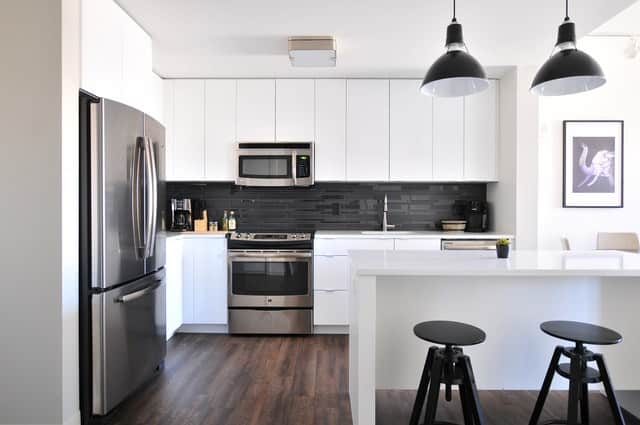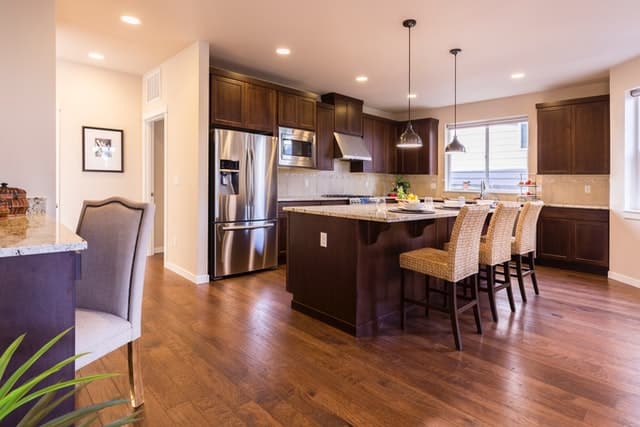
How to choose your kitchen floor?
Generally, parquet flooring is not installed in kitchens, as this room is considered, like the bathroom, to be a wet room. In addition, the floor is frequently walked on, which often makes the installation of tiles more suitable. However, installing a parquet floor in the kitchen can offer many advantages. Here are a few tips on how to enhance the charm of your kitchen with parquet flooring!
Adopt a solid wood kitchen floor
With solid wood, you can turn your kitchen into a room with character that stands out. You can choose from several exotic or European wood species such as maple, oak or acacia. Each of these species offers a different style to your interior. It is necessary to choose a solid wood that has been pre-treated to be more resistant to a kitchen installation.
The advantage of solid wood is that it is very easy to maintain on a daily basis. However, in order to have a long-lasting floor, it is preferable to renew the treatment at least once a year. There are also laminate floors that imitate wood perfectly. These floors are available in wet room versions and are therefore very resistant. However, it is necessary to replace them completely when they are worn.
Installing glued parquet
Glued-down parquet is much more practical to install in a kitchen than floating parquet. Thanks to the glued installation method, the floorboards remain stable and ensure that your floor is both durable and stable. In addition, glued parquet prevents the floor from warping. It is also possible to apply an anti-moisture product to increase the durability of your floor.
For glued parquet, you can choose from a wide variety of colours and designs. It is available in shades ranging from brown and beige to grey and cream. It can also be laid in English, French, herringbone or mosaic patterns.
The advantages of traditional parquet
Traditional parquet is perfect for adding a certain cachet to your kitchen. It is a timeless floor covering that can be laid in a herringbone pattern, for example. The geometric shapes of your parquet floor add character to your kitchen. You can integrate it into a modern room to play with contrasts, and combine it with metallic elements or black and taupe colours. You can also go for a classic, timeless look by opting for wood-style kitchen cabinets with metal handles.
A traditional herringbone parquet floor can also be harmoniously integrated into a retro kitchen, combined with brass elements, for example.
Combining parquet and tiles in the kitchen
For an original kitchen, you can combine tiles with parquet flooring. This combination adds a modern yet warm touch to your space and is a practical way of defining areas in your kitchen. This choice is suitable for both small and large kitchens and offers great scope for customisation.
Tiles can be laid along your furniture and worktops and parquet installed further back to define a dining area. For a contemporary look, parquet can be combined with patterned cement tiles. Even more trendy and original, the combination of hexagonal tiles and light-coloured parquet strips will add charm to a contemporary kitchen.
The choice of parquet effect tiles
The final solution for enjoying a parquet-style covering in your kitchen, while avoiding the disadvantages of such a covering, is to choose parquet effect tiles. Very popular in recent years, it is more expensive, but much more resistant and requires very little maintenance. Perfect for wet rooms, it doesn’t feel warm underfoot, but it adds a certain cachet to your kitchen.
Imitation parquet tiles are suitable for all kitchen styles. It can be integrated into a design and convivial room as well as into a modern and refined kitchen. It goes perfectly with sober furniture.
